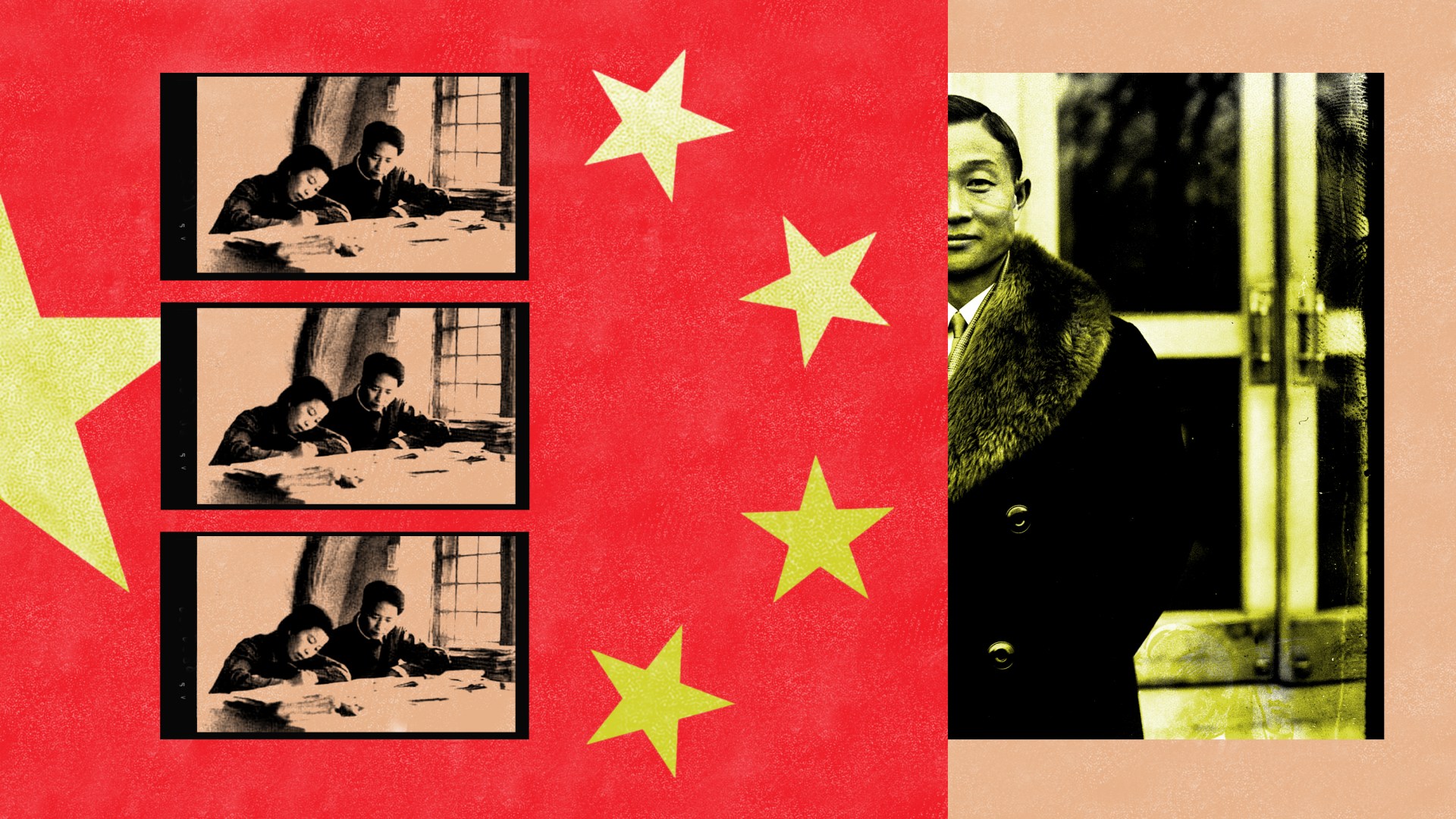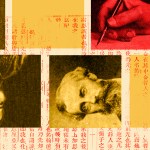Americans tend to be optimists about technology. We see it as a means of progress, comfort, wealth, and discovery. And why not? Technology has treated us well, and very few among us would pooh-pooh the engine, the hot water heater, the refrigerator, the word processor, the text message.
In technology—it might be a mild blasphemy to say—we live and move and have our being. Technology shapes how we work, travel, and eat—even how we think and write and speak to one another. And technology is increasingly digital: The mass of hardware and software we commonly sweep together as “the internet” reaches into ever more parts of our lives, if only invisibly.
But in the last decade, the internet has rather lost its sheen for select segments of the American public. This change should not be overstated; though a Jonathan Haidt–style tech skepticism generally prevails within elite media, Americans still use the internet, oppose smartphone bans in schools, and, on average, give children their first smartphones at the tender age of 11.
Yet we do have a growing sense of unease. Certainly, the kind of excitement that existed in 2008—fueled by hopefulness about social media’s role in politics—is long gone. We have become the internet’s accusers, as long-time journalist Jeff Jarvis argues in The Web We Weave: Why We Must Reclaim the Internet from Moguls, Misanthropes, and Moral Panic. We allege misdeeds, he writes, ranging from polarizing “society into echo chambers” to “robbing us of our attention, altering our brains, making us stupid, and electing Donald Trump.”
Are these accusations unfair? I wanted to read Jarvis’s book because I’ve leveled a version of several myself and could fairly be called a tech skeptic. (My kids won’t have smartphones at 11.) But maybe I’ve been swept along too far toward pessimism. Maybe I’m beholden to an overblown moral panic. Maybe I’ve made the internet a scapegoat for sins not its own.
So I came to The Web We Weave to encounter a more considered tech optimism than the basic American instinct and to give that optimism a fair shake. Jarvis does make vital, if occasionally inconsistent, points about individual responsibility and state regulation. But his defense of the internet also wrongly presumes that technologies are neutral tools, uncritically embraces online living, blurs the line between journalism and advocacy, and misunderstands the biblical idea of covenant.
Responsibility and regulation
The most important takeaway of The Web We Weave is this: The internet’s sins are our sins, and we can repent of them. We are responsible for the digital landscape we’ve created, but we can also change it. We aren’t fated to the futures of sci-fi doom or glory.
“What the internet is, good and bad, is made of human accomplishment and human failure,” Jarvis writes. “All the ills the internet is accused of fostering—racism, divisiveness, injustice, inequity, ignorance—are not the fault of the technology. The technology did not cause them—we did.”
In one of several dips into religious language, Jarvis examines “the internet’s seven deadly sins,” It stands accused, in his telling, of encouraging hate, lies, greed, the corruption of youth, addiction, excess, and hubris. In every case, Jarvis concludes, the internet “is blamed as the cause of [these] ills when often it is merely a conduit for them.”
Generative artificial intelligence like ChatGPT is especially adept at channeling human vice, for it uses scads of human-made content as its raw materials. The Web We Weave describes this AI as a sort of structural sin detector, able to observe and sketch contemporary human evil on a grand scale.
Jarvis is careful to clarify that his call for responsibility here is not a call for state regulation. He understands the problem of regulatory capture and supports Section 230, a widely misunderstood law that functions as the “Internet’s First Amendment” by protecting online platforms from legal liability for what their users post. He’s an ardent advocate of free speech, attuned to the danger of drawing a “legal line between good and bad speech,” the risk of panic-induced legislation, and the foolishness of imagining we can eradicate disinformation. He even rejects secondhand censorship, noting that laws forcing platforms to take down “legal but harmful” speech aren’t meaningfully different from direct suppression.
Tech as tool
Jarvis is at his most sensible on those themes. He recognizes that the underlying issue is human behavior and that laws are “ineffective at regulating” behavior “except in the extreme.”
In consequence, The Web We Weave proposes “different strategies” to reform our online conduct: “education, moral suasion, social pressure, and the public negotiation of norms.” In its efforts in these directions, however, the book falls short.
Undergirding many of Jarvis’s recommendations is an understanding of digital technologies as morally neutral tools. Much “like the printing press and steam, the transmitter and the automobile,” he argues, the internet and AI are tools “which we may use to good ends and bad.”
In a bare sense that’s true—yet thinking of technology only or even primarily as a “tool we use to mold our culture” can blind us to how the tool molds us in turn. We do have agency. We do wield the hammer. But day in and day out, it works on us while we work with it. Our hands grow calloused. Our backs habitually bend, then strain to straighten. Our minds, as the old saying goes, begin to see everything as a nail.
The insufficiency of Jarvis’s take on how technology affects us is particularly evident when he engages with Haidt (along with fellow travelers Jean Twenge and Nicholas Carr). He accuses these thinkers of being self-interested “moral entrepreneurs” and “paternalistic prigs” chasing money, fame, and book deals. Brushing away Haidt’s reams of research documenting the ill effects of letting children online too much and too young, Jarvis subscribes instead to the Taylor Lorenz Theory of Why the Kids Are Not Okay, which he summarizes—not in so many words—as the existence of adult Republicans.
That concern set aside, Jarvis blithely welcomes AI into the classroom, inviting educational institutions to stop asking students to absorb facts and learn to write. They can “concentrate less on memorization and content creation,” he says, because these are “things machines can now do.” So eager is Jarvis to defend generative AI as a neutral tool that he pins all responsibility for problems on its makers, letting users off the hook.
And he either misses or misunderstands the Haidt-style case for getting children off social media, contending that this would leave them “no better off” because they’d be “more isolated.” They wouldn’t, because, as Haidt has explained, this is “a collective action problem: it’s hard for anyone to quit as long as everyone else is on a platform.” But if we all quit together, quitting isn’t isolating. Kids would relearn other ways to hang out.
A life online
Perhaps that relearning is difficult for Jarvis to imagine because, as he frankly admits, he is extremely online. In one passage, while conceding that real-life connections matter, he describes living a very internet-mediated existence. “I care more,” Jarvis says, “about the communities I interact with online” than about local relationships in his “suburban town where some of my neighbors are Trump voters.”
Thus, describing research in which algorithm changes on Facebook and Instagram led to users spending “dramatically less time on both platforms,” Jarvis doesn’t seem to see that result as especially welcome.
Or, when he describes Black women being “harassed, abused, surveilled, and doxed” on Twitter (now X), he never considers that they should log off, apparently accepting that Twitter is a big enough part of their lives to warrant enduring abuse. Ideally, of course, Black women (and everyone else) would be able to use social media without being harassed. But we don’t live in an ideal world, and suffering through digital attacks is not our best or only option.
Jarvis concedes that the “internet’s business model” involves “seducing and tricking people into diverting their attention from more important matters.” But his solution is not spending more of our lives offline. Instead, he foresees “develop[ing] new models to support creativity, reporting, education, and civic involvement online”—that is, moving those important matters outside the arena of embodied life.
What happened to our power to decide our own future? If humans can change the direction of the whole internet, surely we can also sometimes turn off our screens and engage out here in meatspace.
Activist journalism and ‘AI boys’
Much of that online education, if Jarvis had his way, would be conducted by an increasingly activist press.
Like Margaret Sullivan, another journalist of his generation, Jarvis is tired of “the old journalistic trope that newspapers just deliver the facts.” He wants journalists to “be advocates and activists for truth and understanding, equity and justice,” to “play the role of educator to place facts in the context of history, economics, and ethics.” It’s not enough for reporters to report on problems, Jarvis says. They must also “seek solutions,” “understand needs,” “see opportunities,” and “provid[e] leadership.”
Of course, we already have a kind of journalism to do all these things. It’s called opinion. For decades—and for good reason—opinion has been distinguished from straight reporting, but that distinction has become a point of contention in recent years.
Like many who want to blur the line between reporting and opining, Jarvis does so in pursuit of social justice, and he never ceases reminding the reader just how progressive he is. Jarvis is a white man, and he has even dared to become an old white man. But he makes sure we know he’s what left-wing writer Freddie deBoer has dubbed a “Good White Man,” the kind of progressive white man who shoulders “a special burden of helping to end injustice and to ‘center’ women, people of color, and other minority groups, to step back and let others speak.”
This is difficult to do when one is a white man writing a book. Jarvis coins the phrase “AI boys” and uses it throughout to reiterate his contempt for the predominantly male developers and entrepreneurs who create the technology he embraces—technology he says should be wrested from their control once they’ve launched it.
He suggests that the real motivation of those who raise concerns about “the internet, social media, and algorithms … might well be fear or bigotry directed at people who exploit a moment of technologically driven change to demand a seat at the table of power.”
And he has that increasingly common tic of invoking “women and people of color” as a magical monolith whose wisdom is perpetually neglected by a dastardly press. This might be a strong narrative were the mainstream press not so obviously interested in demographic diversity. The very day I wrote this review, a reporter asked me for an interview, casually mentioning her interest in including “other sources in my story than just white men.”
A strange covenant
For all that, The Web We Weave won me back a bit at the end. There, Jarvis returns to his theme of individual responsibility and even virtue, urging readers to hold themselves to a higher standard of behavior online and so make a small but realistic contribution to a more humane and truthful internet culture.
Curiously, he couches this proposal in the language of covenant, explicitly invoking the word’s biblical history to say “that we—users, companies, technologists, governments, researchers—need to take on a sense of responsibility and obligation to one another”:
As my [Presbyterian minister] sister points out, a covenant—such as the one made in marriage—is open-ended and can change as life and circumstances evolve and unexpected challenges arise. More than statutory community standards imposed from on high and more than actual statutes legislated by governments, covenants should be living documents, open, collective, and collaborative, able to change in new situations but still hearkening and hewing to sets of principles that should govern us all with mutual consent.
These covenants would be created voluntarily, Jarvis writes, but companies that didn’t volunteer to make a meaningful covenant with users “might end up with rules imposed on them by legislators. A first step in regulation could be for government to expect companies to negotiate covenants in public.” So, maybe not so voluntary after all, for what is a governmental expectation if not regulation backed by force?
That question of compulsion aside, Jarvis’s understanding of covenant doesn’t square with the biblical context to which he appeals. God’s covenants with his creation are many things, but “open-ended,” “collaborative,” and responsive to unexpected challenges are not descriptors that come to mind.
A biblical covenant, as J. I. Packer wrote for CT in 1962, “is a defined relationship of promise and commitment which binds the parties concerned to perform whatever duties towards each other their relationship may involve.” Or, to borrow the words of Paul Eddy, a pastor and scholar of covenant at Bethel University, a covenant is a “committed, community-based, kinship creating, agape-love relationship.” It is “love formalized.”
Jarvis is right to distinguish covenant from contract and law, but he’s mistaken to imagine it can define the relationship between me and Mark Zuckerberg—or me and Jeff Jarvis. His closing line asks readers to hold him accountable to his self-set standards for his online behavior. But how? Some tweets?
A covenant for virtue is a good idea, but the accountability it entails can only happen in a real relationship. And real relationships can grow online, but their more natural habitat is the offline world, the flesh-and-blood world, the world beyond the internet.
Bonnie Kristian is the editorial director of ideas and books at Christianity Today.
















































